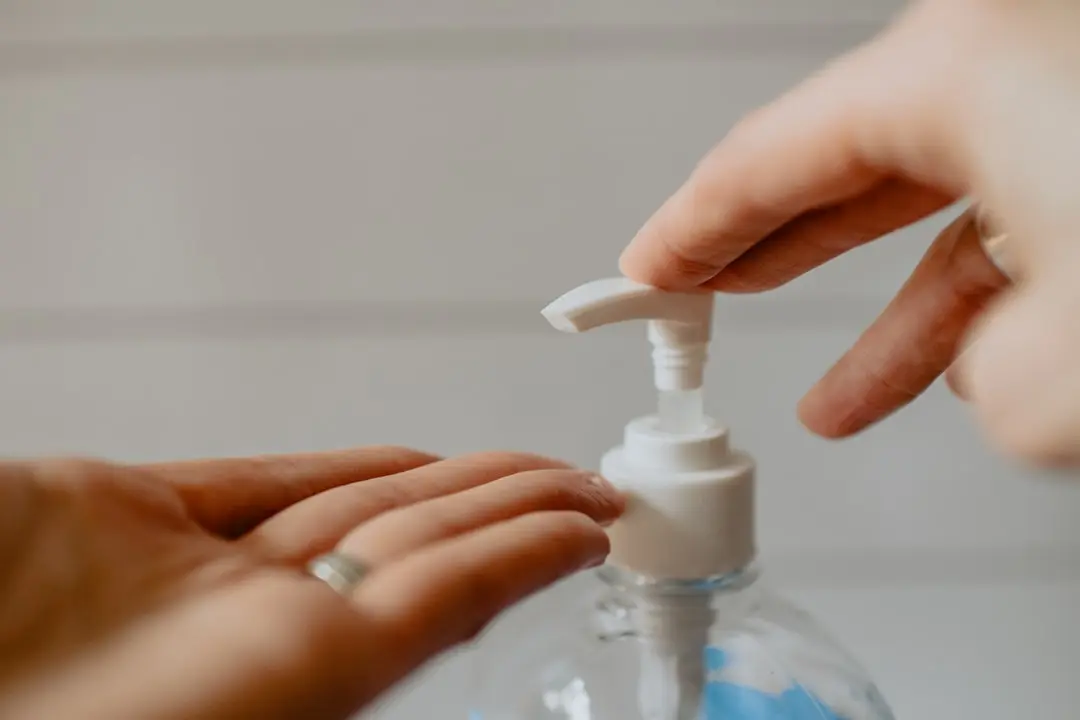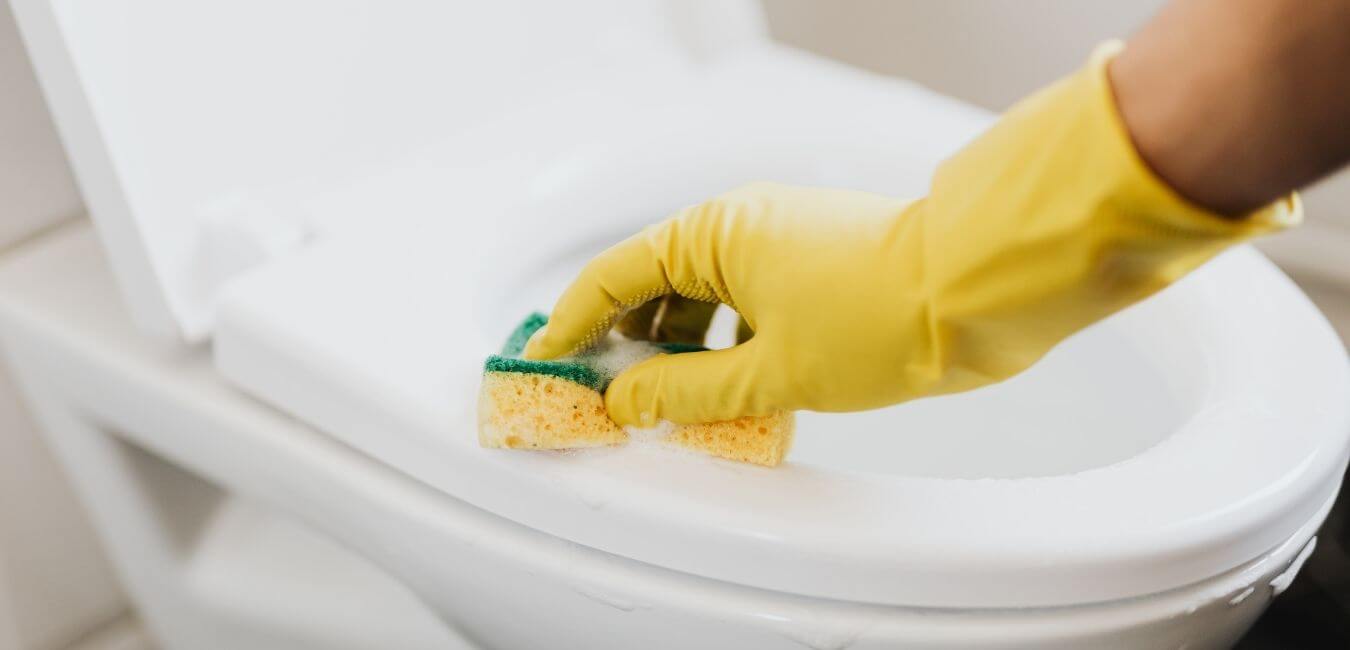Are you struggling to remove stubborn stains from your beautiful wood veneer furniture? Stains on wood veneer can be a real headache, robbing your furniture of its aesthetic appeal.
Our information-packed guide will arm you with effective techniques to tackle common causes of stains and provide preventive measures for future spills. Intrigued? Let’s dive right in!
Key Takeaways
- Water stains on wood veneer can be removed by blotting the area dry and air-drying it, or by using a mild detergent or other household items like toothpaste or mayo.
- Food and beverage stains can be gently scrubbed with a mixture of mild dish detergent and warm water or a vinegar and water solution for more stubborn stains.
- Ink stains can be treated with rubbing alcohol, nail polish remover, or a paste made from baking soda and water.
- Oil and grease stains can be lifted using a paste of baking soda and water or by gently scrubbing with dish soap. Preventive measures like using coasters, placemats, regular dusting, and cleaning can help avoid staining in the first place.
Common Causes of Stains on Wood Veneer

Water stains are a common cause of discoloration on wood veneer surfaces, usually resulting from liquids left standing for extended periods.
1. Water stains
Water stains can spot your wood veneer. These spots happen from glasses or cups without coasters. It could also be from a spill not cleaned up right away. To fix this, try using a soft cloth to blot the space dry.
Then let it air out instead of using heat to dry it. If this does not work, you may need something stronger like a clothing iron, toothpaste or even mayo! With these methods, always test on a small hidden spot first so you do not harm your piece further.
Be careful when using them because too much heat or time can make things worse. Always follow steps with care to keep your items safe and stain-free.
2. Food and beverage stains
Food and beverage stains are common on wood veneer surfaces. These stains can happen when you accidentally spill food or drinks like coffee, tea, or wine on the wood veneer. To remove these stains, start by blotting up any excess liquid with a clean cloth.
Then, mix a small amount of mild dish detergent with warm water and gently scrub the stained area using a soft cloth or sponge. Rinse the area with clean water and dry it thoroughly to prevent any moisture damage.
If the stain is stubborn, you can try using a mixture of equal parts white vinegar and water instead of detergent. Just remember to test any cleaning solution on an inconspicuous area first to make sure it doesn’t cause any damage to the wood veneer finish.
3. Ink stains
Ink stains on wood veneer can be tough to remove, but there are effective techniques you can try. One method is to use rubbing alcohol or nail polish remover. Dampen a cloth with either of these liquids and gently rub the ink stain until it fades away.
Another option is to make a paste using equal parts baking soda and water. Apply the paste to the ink stain, let it sit for a few minutes, then carefully wipe it off with a clean cloth.
Remember to always test any cleaning solution on a small, inconspicuous area of the wood veneer before applying it to the entire stain.
4. Oil and grease stains
Oil and grease stains are a common problem on wood veneer. To remove these stains, you can make a mixture of baking soda and water. Apply this paste to the stain and gently scrub it with a soft cloth.
Let it sit for a few minutes before wiping it off. You can also use dish soap or mild detergent to clean the stain. Just remember to always blot instead of rubbing, as rubbing can spread the stain further.
5. Mold and mildew stains
Mold and mildew stains can be a common problem on wood veneer. These stains are usually caused by excess moisture and lack of proper ventilation. To remove mold and mildew stains, you can use a mixture of vinegar and water.
Simply apply the mixture to the stained area with a cloth or sponge, then gently scrub until the stain is gone. It’s important to make sure the wood veneer is completely dry after cleaning to prevent further growth of mold or mildew.
Regularly dusting and cleaning your wood veneer can help prevent these stains from occurring in the first place.
Factors to Consider When Removing Stains from Wood Veneer

When removing stains from wood veneer, there are several factors you should consider, including the type and severity of the stain, the type of wood veneer, the finishing on the wood veneer, how long ago the stain occurred, and what cleaning materials and tools you have available.
1. Type of stain and its severity
Stains on wood veneer can come from different sources and vary in severity. Common types of stains include water stains, food and beverage stains, ink stains, oil and grease stains, and mold and mildew stains.
The severity of the stain also plays a role in determining the best removal technique. It’s important to consider these factors when deciding how to tackle a stain on wood veneer furniture or surfaces.
2. Type of wood veneer
There are different types of wood veneer that you may encounter when removing stains. Some common types include oak, maple, cherry, mahogany, and walnut. Each type of wood veneer has its own characteristics and properties.
For example, oak is known for its durability and strong grain pattern, while maple has a lighter color and fine texture. It’s important to consider the type of wood veneer you are working with when choosing the appropriate technique or cleaning solution to remove stains effectively without causing damage.
Remember to always test any cleaning method on a small, inconspicuous area first to ensure it doesn’t harm the wood veneer.
3. Finishing of the wood veneer
The finishing of the wood veneer is an important factor to consider when removing stains. Different types of finishes, such as lacquer, varnish, or oil-based finishes, may require different cleaning techniques.
For example, water-based finishes are more prone to damage from harsh cleaners and may require gentle cleaning methods. On the other hand, oil-based finishes can be more resistant to stains but may need special treatments for removal.
It’s essential to determine the type of finish on your wood veneer before attempting any stain removal method to avoid causing further damage.
4. Time since the stain occurred
If you’re dealing with a stain on wood veneer, the time since the stain occurred can affect how easily it can be removed. The longer a stain is left untreated, the more difficult it becomes to remove.
Fresh stains are usually easier to tackle compared to older ones that have had time to set into the wood. So, if you notice a stain on your wood veneer, it’s best to address it as soon as possible for better chances of successful removal.
5. Available cleaning materials and tools
To remove stains from wood veneer, you’ll need some cleaning materials and tools. Here are a few options to consider:
1. Mild detergent: Use gentle dish soap or household cleaner diluted in water for general cleaning.
2. Rubbing alcohol or nail polish remover: These can be used to tackle ink stains on wood veneer surfaces.
3. Baking soda: A mixture of baking soda and water can help lift oil and grease stains from the wood surface.
4. Vinegar: Mix vinegar with water for an effective solution to remove mold and mildew stains.
Effective Techniques for Removing Stains from Wood Veneer
To remove water stains from the wood veneer, blot the area with a clean cloth and then use a hairdryer on low heat to air dry it completely.
1. Blotting and air drying for water stains
Water stains on wood veneers can be effectively removed using blotting and air-drying techniques. Here are the steps you can follow:
- Immediately after noticing the water stain, gently blot the excess moisture with a clean cloth or paper towel. Be careful not to rub the stain, as it may spread or get deeper into the wood.
- Allow the wood veneer to air dry naturally. Avoid using heat sources like hairdryers or heaters, as they can cause further damage to the wood.
- If the water stain remains after drying, you can try using a mild detergent mixed with water to gently scrub the area. Use a soft-bristled brush or sponge and work in circular motions.
- After scrubbing, rinse the area with clean water and pat it dry with a clean cloth.
2. Gently scrub with mild detergent for food and beverage stains
To remove food and beverage stains from wood veneer, follow these steps:
- Mix a small amount of mild detergent with water.
- Dip a soft cloth or sponge into the soapy solution.
- Gently scrub the stained area in a circular motion.
- Rinse the cloth or sponge and wipe away any residue.
- Use a clean, damp cloth to rinse the area again.
- Dry the wood veneer thoroughly with a soft towel.
3. Using rubbing alcohol or nail polish remover for ink stains
To remove ink stains from wood veneer, you can use rubbing alcohol or nail polish remover. Here’s how to do it:
- Dampen a clean cloth with rubbing alcohol or nail polish remover.
- Gently dab the cloth onto the ink stain, being careful not to rub it in further.
- Continue dabbing until the ink begins to lift from the wood veneer.
- Once the stain is removed, wipe the area with a clean, damp cloth to remove any residue.
- Dry the wood veneer thoroughly.
4. Applying a mixture of baking soda and water for oil and grease stains
To remove oil and grease stains from wood veneer, you can use a mixture of baking soda and water. Here’s how to do it:
- Make a paste by mixing equal parts baking soda and water.
- Apply the paste directly to the stain, making sure to cover it completely.
- Gently scrub the stain using a soft cloth or sponge.
- Leave the paste on the stain for about 10 – 15 minutes to allow it to absorb the grease or oil.
- Afterward, wipe away the paste with a clean, damp cloth.
- If needed, repeat this process until the stain is completely gone.
5. Using a mixture of vinegar and water for mold and mildew stains
To remove mold and mildew stains from wood veneer, you can try using a mixture of vinegar and water. Here’s how:
- Mix equal parts vinegar and water in a spray bottle.
- Spray the solution directly onto the affected area.
- Let it sit for a few minutes to allow the vinegar to penetrate and dissolve the stains.
- Use a soft cloth or sponge to gently scrub the area in circular motions.
- Rinse the area with clean water and wipe it dry.
- Vinegar has natural antifungal properties that help kill mold and mildew.
- It’s important to test the solution on a small, inconspicuous area of the wood veneer before applying it to the entire stain.
- Always wear protective gloves and work in a well-ventilated area when using vinegar.
Preventive Measures to Avoid Stains on Wood Veneer

To prevent stains on wood veneer, use coasters and placemats to protect against spills. Clean up any spills or stains promptly and regularly dust and clean the wood veneer. Avoid placing hot or wet items directly on the wood veneer and consider applying protective coatings or sealants to maintain its appearance.
1. Using coasters and placemats to protect against spills
To protect your wood veneer from spills, make sure to use coasters and placemats. These simple items can save you from the headache of dealing with stubborn stains.
2. Promptly cleaning up spills and stains
To keep your wood veneer looking its best, it’s important to clean up spills and stains as soon as they happen. Here are some tips:
- Act quickly: Don’t let spills sit on the wood veneer for too long as they can seep into the surface and cause staining.
- Blot the spill: Use a clean cloth or paper towel to blot up the liquid gently. Avoid rubbing as it can spread the stain further.
- Use mild dish soap: Mix a small amount of mild dish soap with water. Dampen a cloth with this mixture and gently dab at the stain, working from the outside in.
- Rinse with clean water: After cleaning with soapy water, rinse the area with a clean cloth dampened in plain water to remove any residue.
- Dry thoroughly: After cleaning, make sure to dry the wood veneer thoroughly to prevent moisture damage. Use a soft cloth or allow it to air dry naturally.
3. Regularly dusting and cleaning the wood veneer
Keeping the wood veneer clean is important to prevent stains. Here are some tips for regular maintenance:
- Dust the wood veneer regularly using a soft cloth or feather duster. This helps remove any surface dust or dirt that can cause discoloration.
- Use a mild cleaning solution made of water and a small amount of gentle detergent to clean the wood veneer. Dampen a soft cloth with the solution and gently wipe the surface, going with the grain of the wood.
- Avoid using harsh chemicals or abrasive cleaners on the wood veneer, as they can damage the finish and make it more susceptible to staining.
- If there are spills or stains on the wood veneer, clean them up immediately to prevent them from setting in. Use a damp cloth to blot the spill and then dry the area thoroughly.
- For sticky residue or stubborn stains, you can try using a mixture of equal parts vinegar and water. Dampen a cloth with this solution and gently rub the stained area until it is removed.
4. Avoiding placing hot or wet items directly on the wood veneer
To keep your wood veneer looking its best, it’s important to avoid placing hot or wet items directly on the surface. Here are some tips to help you protect your wood veneer:
- Use coasters or placemats under hot beverages, pots, and pans to prevent heat damage.
- Place a barrier, such as a tablecloth or trivet, between wet dishes or glasses and the wood veneer.
- Wipe up spills immediately to prevent moisture from seeping into the wood and causing stains.
- Avoid leaving damp items, like wet towels or clothing, on the wood surface as they can lead to water damage.
- If you need to place something hot or wet on the wood veneer temporarily, use a protective pad or towel underneath to provide a buffer.
5. Applying protective coatings or sealants to the wood veneer
To protect the wood veneer from stains, applying protective coatings or sealants is important. Here are some tips to help you:
- Use a clear varnish or polyurethane sealant to create a protective layer on the wood veneer.
- Apply the coating evenly using a brush or roller, following the manufacturer’s instructions.
- Allow the sealant to dry completely before using the furniture or exposing it to liquids.
- Reapply the coating every few years or as needed to maintain its protective properties.
- Consider using a wax polish or furniture oil on top of the sealant for added shine and protection.
Conclusion
Removing stains from wood veneer can be a challenging task, but with the right techniques and preventive measures, it is possible to keep your furniture looking clean and beautiful.
By understanding the common causes of stains, considering factors like the type of stain and wood veneer, and using effective techniques such as blotting, scrubbing gently, or applying homemade solutions like baking soda or vinegar mixture, you can successfully remove stains from wood veneer.
Additionally, implementing preventive measures like using coasters or protective coatings will help maintain the integrity of your wood veneer and prevent future staining.
FAQs

1. What are some common causes of wood stains?
The common causes of wood stains often include spills, water marks, and a lack of surface protection on the wood furniture.
2. How can I remove tough water stains from my wood veneer?
You can use different methods like brushing, flushing, freezing, presoaking, and pretreating to remove tough water stains from your wood veneer effectively.
3. Can scraping help in removing wood stains?
Yes! Scraping is one of the effective techniques for stain removal especially if you follow proper guidelines when doing it.
4. Are there preventive measures for avoiding future staining on my wooden surfaces?
Yes! Applying a good finish or other forms of surface protection and regular maintenance helps keep away future staining on wooden surfaces.
5. Is stripping furniture finish necessary when trying to remove a stain?
Stripping furniture finish isn’t always needed but can be useful when removing harsh or old stains that have fused with the current veneer coating.









